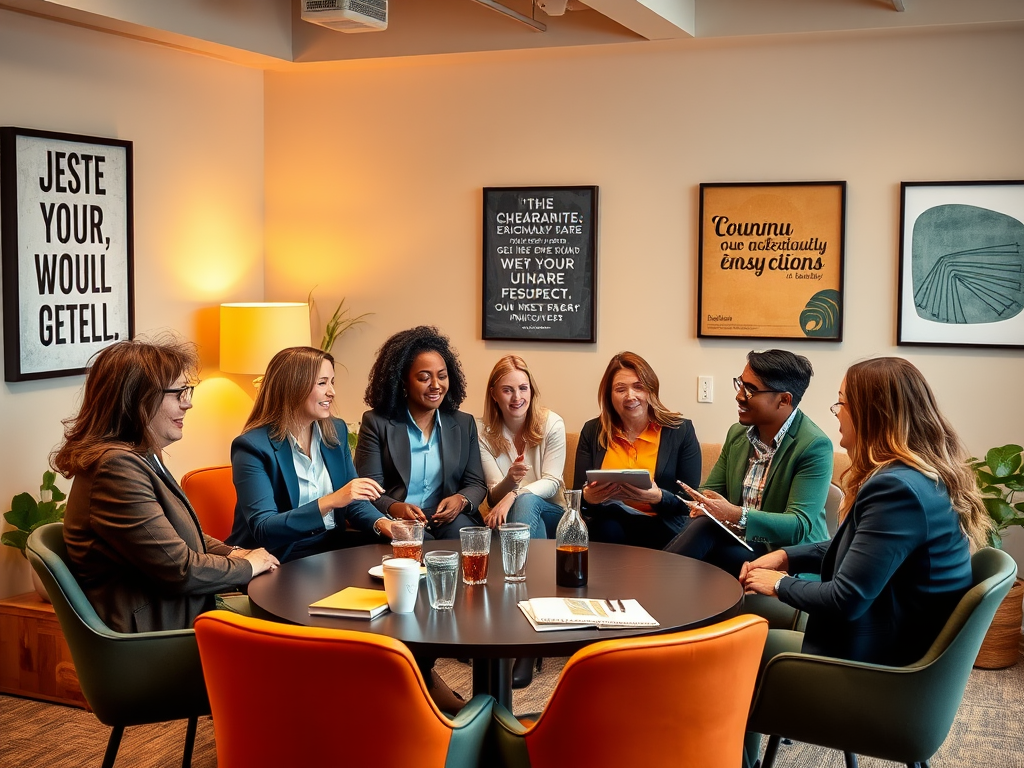How to Incorporate Colors in Your Business Casual Wardrobe
In the world of professional attire, the concept of “business casual” has evolved to encompass a unique blend of professionalism and personal expression. The right use of colors can transform a standard outfit into a dynamic representation of your individuality and brand. While navigating the waters of workplace fashion, many individuals grapple with the challenge of maintaining professionalism while injecting a sense of energy and vibrancy into their wardrobes. This article explores how to effectively incorporate colors into your business casual outfits, helping you to feel empowered and stylish in any professional setting.
Colors serve as a visual language, allowing you to communicate your personality and confidence before you even speak. By blending various hues effectively, you can create outfits that are not only aesthetically pleasing but also appropriate for the workplace. Understanding how to choose and pair colors is essential for crafting a wardrobe that resonates with your professional demeanor while showcasing your unique style. Through this comprehensive guide, we’ll delve into the psychological implications of colors, the importance of a cohesive color palette, and practical tips for mixing and matching shades to create captivating business casual looks.
Understanding Business Casual

Business casual is not merely a set of guidelines defining professional wear; it represents an evolving cultural norm that suggests style without sacrificing professionalism. The key to adapting to this ambiguous dress code lies in balancing traditional business attire with elements that reflect personal style. Moreover, each workplace may interpret this dress code differently, making your understanding of it crucial. Striking the right balance can lead to greater confidence in your appearance and, ultimately, in your ability to perform at work.
The Importance of Colors in Business Casual

Colors are powerful tools that can shape perceptions and influence moods in the workplace. They can make strong impressions, set the tone for interactions, and even impact your confidence levels. Understanding color psychology can guide you in selecting the perfect shades that resonate with both your personality and your professional goals. Here are a few associations to consider:
- Blue: Conveys trust, loyalty, and calmness.
- Red: Signals energy, passion, and action.
- Green: Represents growth, renewal, and balance.
- Yellow: Evokes happiness and optimism.
- Purple: Connotes creativity and sophistication.
Understanding how colors affect perception can empower you to make more informed choices in your wardrobe. For instance, wearing blue can evoke feelings of trustworthiness among colleagues, while red may energize and motivate those around you. Accent colors can also symbolize various aspects of your personality or the role you aspire to in your workplace. Thus, strategically choosing colors can directly align with your professional ambitions.
Choosing the Right Color Palette
When it comes to assembling a business casual wardrobe, a well-defined color palette can make all the difference. Starting with neutral base colors gives you a strong foundation that can be easily interchanged with accent shades. Below is a suggested color palette structure:
| Color Type | Examples |
|---|---|
| Neutral Base Colors | Black, Gray, Beige, Navy |
| Accent Colors | Pastel Pink, Emerald Green, Coral, Mustard Yellow |
The table above outlines how to categorize your colors effectively. Anchoring your outfits on a neutral foundation can provide versatility, while the use of accent colors allows for bursts of personality that prevent your wardrobe from feeling monotonous. Additionally, it’s important to consider your own coloring—select shades that enhance your natural features and appeal to your skin tone. This can aid in achieving a polished look that’s both professional and uniquely you.
Building Your Business Casual Wardrobe
As you start to build your business casual wardrobe, consider incorporating specific clothing items that follow your chosen color palette.
Tops and Blouses
Selecting tops in a variety of colors can create visual interest in your outfits. Structured blouses in pastel or jewel tones add sophistication while maintaining a professional feel. Remember to choose fabrics that fit well and feel comfortable throughout the workday.
- Opt for blouses with tailored cuts in lighter shades.
- Include a few statement tops that incorporate fun patterns and colors.
Bottoms and Trousers
Your choice of bottoms can ground and balance your outfits. Sticking to classic colors like black or navy is wise, but don’t hesitate to explore colored trousers or patterned skirts that integrate into your overall color scheme. Choose fabrics with a structure that holds its shape, enhancing your professional appearance.
- Colored chinos can offer a fresh twist.
- Subtle patterns, such as pinstripes or checks, can elevate simple ensembles.
Accessories and Footwear
Accessorizing is one of the easiest ways to inject color into your outfits without overwhelming your look. Look for vibrant scarves, bold statement necklaces, or colorful footwear that adds a touch of flair. Remember, accessories can also be an excellent opportunity to integrate current trends while maintaining a business-appropriate appearance.
- Brightly colored shoes can provide an eye-catching focal point.
- Scarves can be tied elegantly to introduce a pop of color.
Tips for Mixing and Matching Colors
Mixing colors successfully is an art form that can elevate your professional style. Here are some foundational tips to get you started:
Pairing Colors
A good rule of thumb is to select one or two accent colors to pair with your neutrals. Using the color wheel can be helpful in finding colors that complement each other. For example, combining blue with orange can create a striking contrast, while colors like green and pink can manage a softer, harmonious effect.
Patterns and Textures
Don’t shy away from wearing patterns! Incorporating textures like linen, cotton, or silk can add dimension to your outfit without clashing with your color choices. Patterns that naturally include elements of your selected color palette can tie your look together seamlessly.
Conclusion
Incorporating colors into your business casual wardrobe does not only enhance your professional attire; it allows you to showcase your personality while adhering to workplace standards. By understanding color psychology, establishing a cohesive color palette, and mastering mixing techniques, you can curate stylish outfits that empower you in your professional environment. Embrace your unique style, and let your wardrobe reflect the vibrant individual you are.
Frequently Asked Questions
- What colors are best for a business casual wardrobe? Neutral colors like black, gray, navy, and beige are essential, along with accent colors that complement your style.
- How can I add color to an otherwise neutral outfit? Use accessories such as scarves, ties, shoes, or jewelry to introduce vibrant colors without overwhelming your outfit.
- Are there any colors I should avoid in a business casual setting? While it’s best to avoid overly bright or flashy colors, certain muted tones can still be acceptable. Always consider your workplace culture.
- Can I wear patterns in a business casual environment? Yes, patterns can be appropriate as long as they are subtle and incorporate colors from your palette.
- How often should I update my color palette? It’s good to refresh your color palette seasonally or whenever you feel your wardrobe stagnating or out of sync with your professional style.

